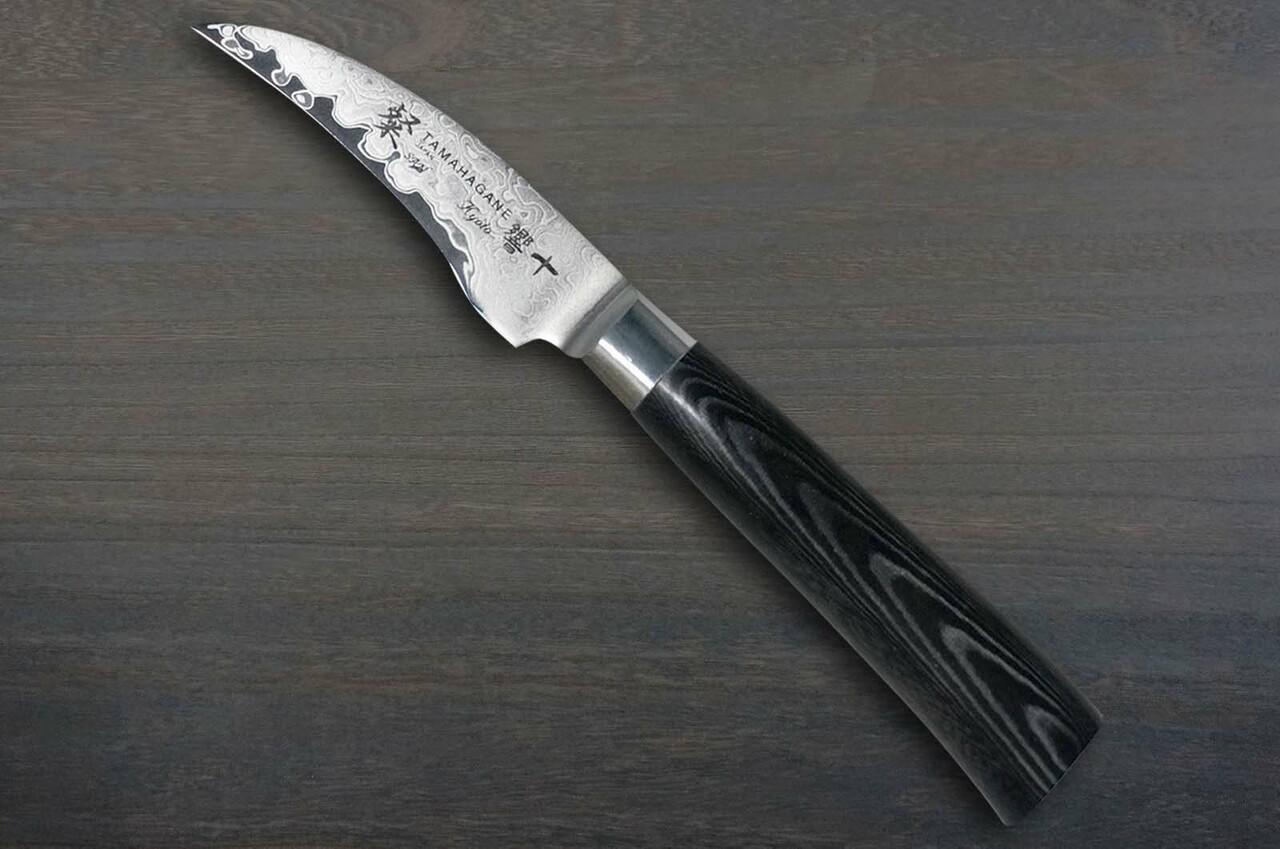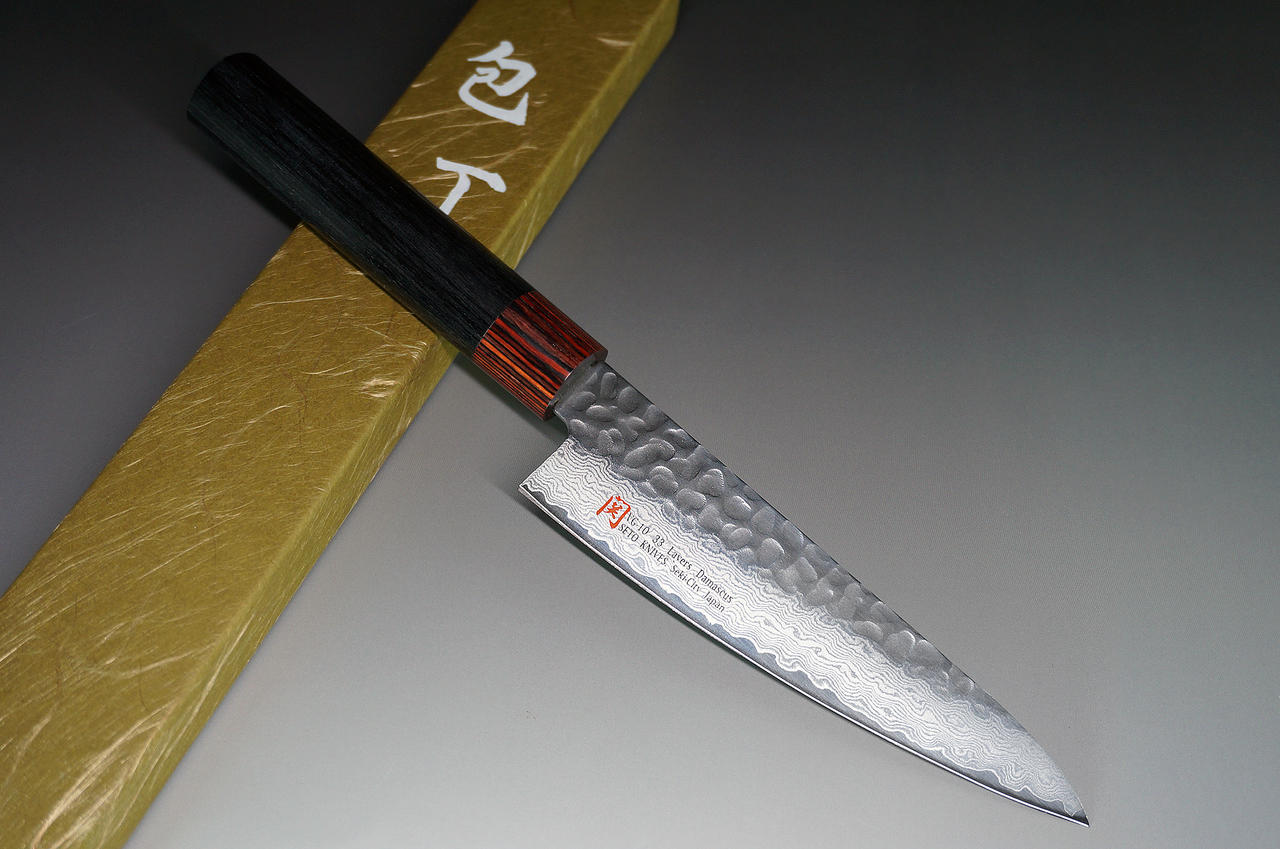Japanese Peeling Knife: Precision in Every Peel
img by : hocho-knife.com
A Japanese peeling knife, often referred to as a “petty” knife, is a culinary staple in both professional and home kitchens, prized for its precision and versatility. Smaller than a chef’s knife but larger than a paring knife, the Japanese peeling knife strikes the perfect balance for detailed tasks. This article explores the unique features that make the Japanese peeling knife a must-have for anyone serious about their culinary tools.
Design and Craftsmanship
The Japanese peeling knife typically features a blade length of about 120mm to 150mm, making it ideal for handling small to medium-sized fruits and vegetables. The design focuses on control and precision, with a sharp point and a slightly curved edge that facilitates a rocking motion for mincing as well as straightforward peeling and slicing. Crafted with the same meticulous attention to detail as larger Japanese knives, the peeling knife often showcases beautiful Damascus patterns or a simple, polished finish, depending on the smith’s style.
Materials
Japanese peeling knives are generally made from high-carbon steel or stainless steel. High-carbon steel blades are known for their exceptional sharpness and edge retention but require more maintenance to prevent rust. Stainless steel options offer more durability and resistance to corrosion, making them easier to maintain. Some premium models may feature a layered steel construction (known as Damascus steel) that combines the benefits of both high-carbon and stainless steel, enhancing both aesthetics and functionality.
Handle
The handle of a Japanese peeling knife is designed to provide comfort and control. It is usually smaller and lighter than those of larger knives, fitting comfortably in the hand for precise maneuvers. Handles can be made from a variety of materials including wood, composite, and even metal, each offering different aesthetic and grip characteristics. The ergonomic design ensures that the knife can be used for extended periods without discomfort, which is crucial for tasks that require attention to detail.
Performance
The performance of a Japanese peeling knife is characterized by its exceptional precision. Its sharp blade and manageable size make it perfect for peeling fruits and vegetables, creating decorative garnishes, and undertaking other intricate culinary tasks. The knife’s agility allows for close, controlled cuts, minimizing waste and enhancing the presentation of dishes.
Durability and Maintenance
The durability of a Japanese peeling knife depends on the material and how well it is maintained. High-carbon steel knives, while requiring more care to avoid rust, can last a lifetime if properly maintained. Stainless steel knives are more forgiving but still benefit from regular sharpening and proper storage. Regardless of the material, washing the knife by hand and drying it immediately after use will help preserve its quality and functionality.
Conclusion
The Japanese peeling knife is an essential tool for any chef or home cook who values precision and efficiency in their kitchen prep. Its specialized design, superior materials, and ergonomic handle make it an invaluable asset for peeling, slicing, and intricate cutting tasks. Investing in a high-quality Japanese peeling knife means investing in the art and enjoyment of cooking, with each peel and cut reflecting the knife’s exceptional capabilities.


